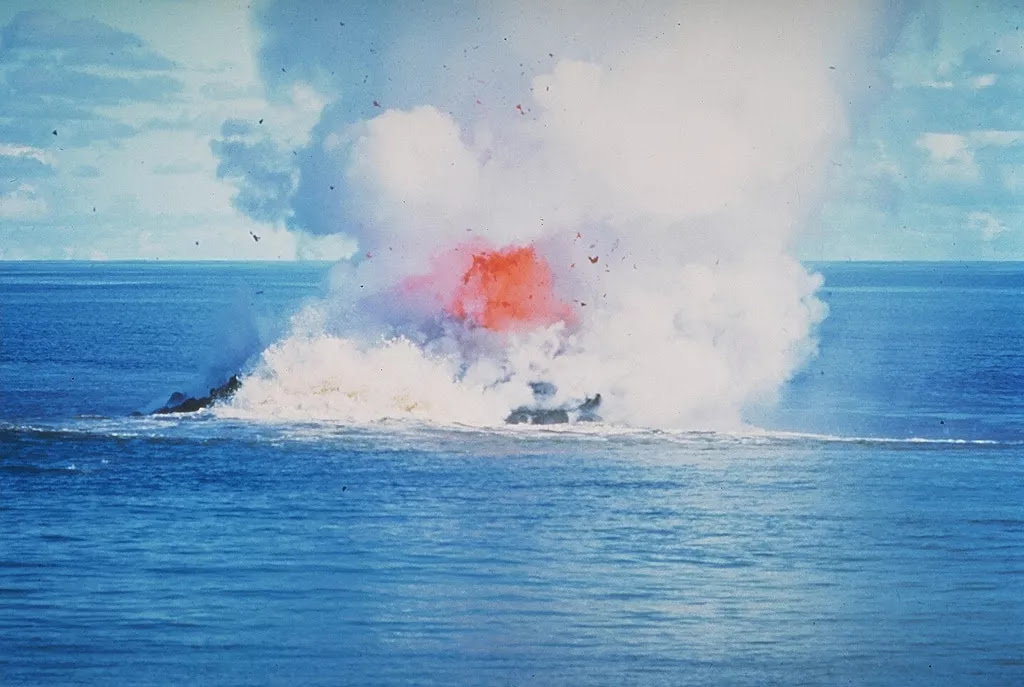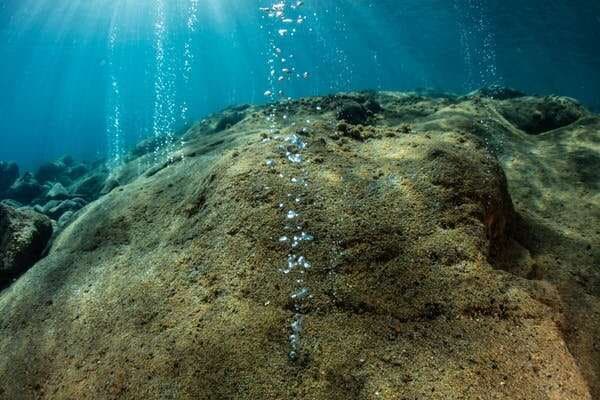
Small submarine volcanoes, known as petit-spot, are located in the oceanic lithosphere far from volcanically active ocean ridges and closer to subduction zones, where tectonic plates slide over each other. However, these volcanoes appear to be an important player in the global carbon life cycle. Submarine volcanism goes largely unnoticed, even though it is much more active than surface volcanism.
Because of the significant hydrothermal activity it generates, it favors the development of life on the ocean floor and plays an essential role in chemical cycles. The presence of magma not far from the surface enables fluids to circulate beneath the Earth’s crust, leading to the creation of hydrothermal springs, which are likely to be the origin of life on Earth.
These relatively high-intensity magma systems have eclipsed another hydrothermal system that developed further away from the ocean ridges, at the level of small-spot volcanoes. These small volcanoes, some fifty meters high, are located in areas where the oceanic crust is old, cold and thick. They are far enough from subduction zones not to be impacted by the activity generated by tectonic plate movements, unlike other volcanoes, such as those located along the Pacific Ring of Fire.
:max_bytes(150000):strip_icc():focal(500x136:502x138):format(webp)/underwater-volcano-47f922516fbb468e88627f9361db8df7.jpg)
Underwater volcano erupting. PHOTO: W.G. MULLER, 1978 (BARRIER REEF CRUISES, QUEENSLAND, AUSTRALIA; COURTESY OF D. TUNI)/SMITHSONIAN INSTITUTION – GLOBAL VOLCANISM PROGRAM
Petit-spot volcanoes are affected by very low levels of magma upwelling from the nearest subduction zones. This relationship is due to the activity of subduction zones, which impact the oceanic crust some 600 kilometers upstream. The passage of one tectonic plate beneath another causes the oceanic crust to bulge and crack in places. The resulting faults extend to the surface and act as a conduit for the lava present in the upper part of the Earth’s mantle, the asthenosphere, which is in contact with the lithosphere.
As it rises, this lava is contaminated by highly hydrated rocks and sediments present in the oceanic crust, and by the time it reaches the surface, its composition has become alkaline and enriched in CO2. Lava solidification produces rocks called peperites, whose formation is characteristic of the contact between lava and sediments with high water content.

An area on the summit of the West Mata Volcano erupting in 2009. Image courtesy of NOAA / NSF / WHOI
A team of Japanese researchers from Tokyo’s Waseda University has been studying these small-spot volcanoes and has confirmed the presence of hydrothermal activity upstream of subduction zones, where the magmatic liquid circulates. The results of the study were published on the Communication Earth & Environment website in early June 2023 and present the characterization of hydrothermal deposits from a petit-spot volcano located upstream of the Japan Trough at a depth of 5.7 kilometers.
The hydrothermal activity present at the site is the deepest described to date and is responsible for deposits rich in iron oxides and manganese oxide. These deposits were formed directly from a hydrothermal fluid, with a temperature below 200°C, when it came into contact with seawater. This fluid appears to be much more enriched in methane and CO2 than the hydrothermal fluids found at ocean ridges. For scientists, these quantities of gas would be large enough to have a significant impact on the global carbon cycle.




